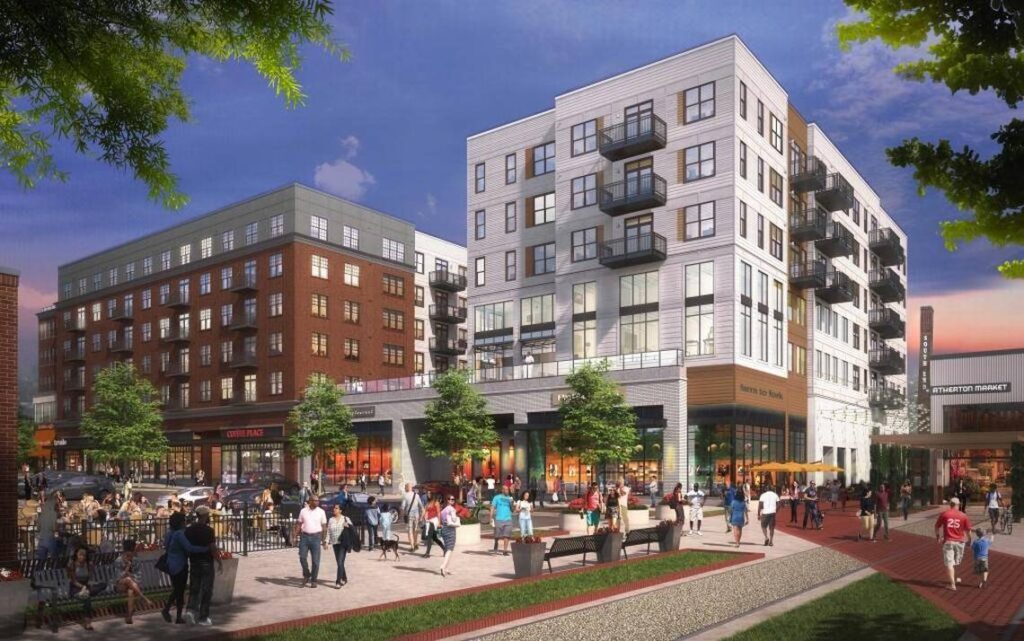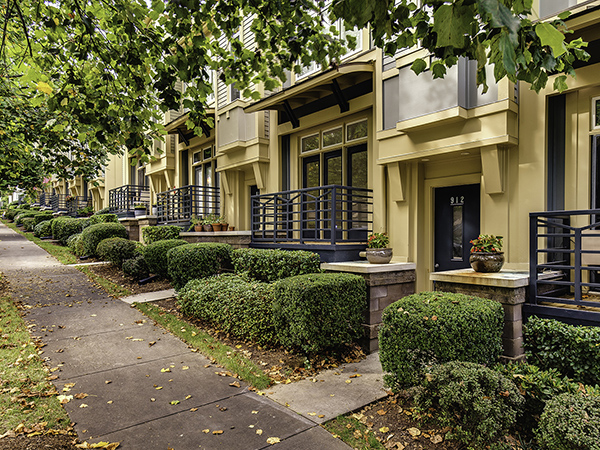The good, the bad, the possibilities: local land use
his is the fourth article in our 8-part series of weekly blog posts called “The Good, the Bad, the Possibilities”. For this series, we are asking local experts three questions to give you a quick overview of recent local trends and solutions with respect to a range of important issues that affect our community’s sustainability. This week’s topic is land use, and our two featured experts are John Komisin and David Walters.

John Komisin

David Walters
John is an architect and the Chairman of Little. Little is a 400-person design firm providing services in architecture, engineering, interior architecture, urban planning, facilities strategy & technology, digital animation and branded graphics with 6 offices in the US and China. Practice areas include Workplace, Community, Retail, Healthcare and Consulting Specialties. John received a Bachelor of Architecture degree from Penn State and attended the University of Florence, Italy.
David is Professor Emeritus of Architecture and Urban Design at UNC Charlotte. He qualified as an architect in England in 1971 and has practiced and taught in England, Italy, Spain and the USA, working in teams that won a wide range of regional and national awards for urban design and planning. Walters is the author, co-author and editor of four books, one on office design and three concerning contemporary urban design and planning.

With regard to local land use, over the past few years:
What are 2-3 positive trends or developments you’re seeing in our community?
John:
“[First,] densification, especially along the light rail corridor. We’re [also] seeing more transportation choices, including more bicycles and now scooters, as well as car ride share programs that will make it more feasible to live in the city without a car. Certainly [there are] more housing choices within Center City.
David:
“More efficient mixed-use urban development is becoming the norm in many parts of the city. More people are understanding the relationship between land use and transportation, [and] more people now understand rail transit as an essential element of a city’s infrastructure and not some kind of luxury toy.”
What are 2-3 negative trends or developments?
John:
“Most of the increased multi-family housing density does not have associated retail/entertainment/goods & services developed as part of it. [In addition,] there are some concerning metrics about decreased ridership on public transportation.”
“Higher density means less green space.”
David:
“[The] increasing gap between well-off folks and poor people means that lower-income families are not able to benefit from the positive trends. They are priced out of good developments and upcoming areas. The city is fast losing ground in its efforts to create housing that is affordable to lower-income citizens. I doubt if we will ever catch up.”
“Affluent white suburbs are deliberately backing out of collaborative problem-solving. E.g. The new suburban charter school movement that breaks away from CMS and leaves the school system with the task of educating mainly lower income and nonwhite children. Racial segregation is alive and well in Mecklenburg. Racism (in all but name) is dragging us backwards.”

What solutions would help reverse the negative trends/developments?
John:
“More dedicated park/green space as we increase density.”
“Make it easy from a public policy standpoint to develop what we want [a mix of uses], and difficult to develop what we don’t want.”
“[We need to] utilize marketing/PR to educate citizens on the benefits of public transportation, [and] continue to earmark sufficient funds for public transportation and infrastructure.”
David:
“Affordable housing: The private sector can never solve this issue. There have to be major public building programs that take the lead. This faces huge political impediments but it’s the only way. The problem of affluent citizens being the only ones to enjoy good development is an even bigger problem. This is inextricably tied to gentrification. It has always been this way in/with western cities.
We do risk social breakdown over this increasing gulf between the middle and upper classes and the poorer citizens. We Americans have no appetite for the only real solutions — ones that necessarily require heavy public sector involvement. The first step towards solutions is to recognise and say publicly that our economic values in this city have to change, and along with that go major reforms of tax policy to generate money for the public sector.”
Did you know that Sustain Charlotte has a Land Use Advisory Council? These folks offer expertise and guidance to our staff and board of directors to help shape our work around land use policy.
Check back next week for more interviews with sustainability experts.
Thanks for reading!
As a nonprofit, community support is essential for us to keep doing what we do — including providing free articles like this. If you found this article helpful, please consider supporting Sustain Charlotte.
Want to stay in the loop? Subscribe to our weekly newsletter and follow us on Instagram, Facebook, and Twitter.
